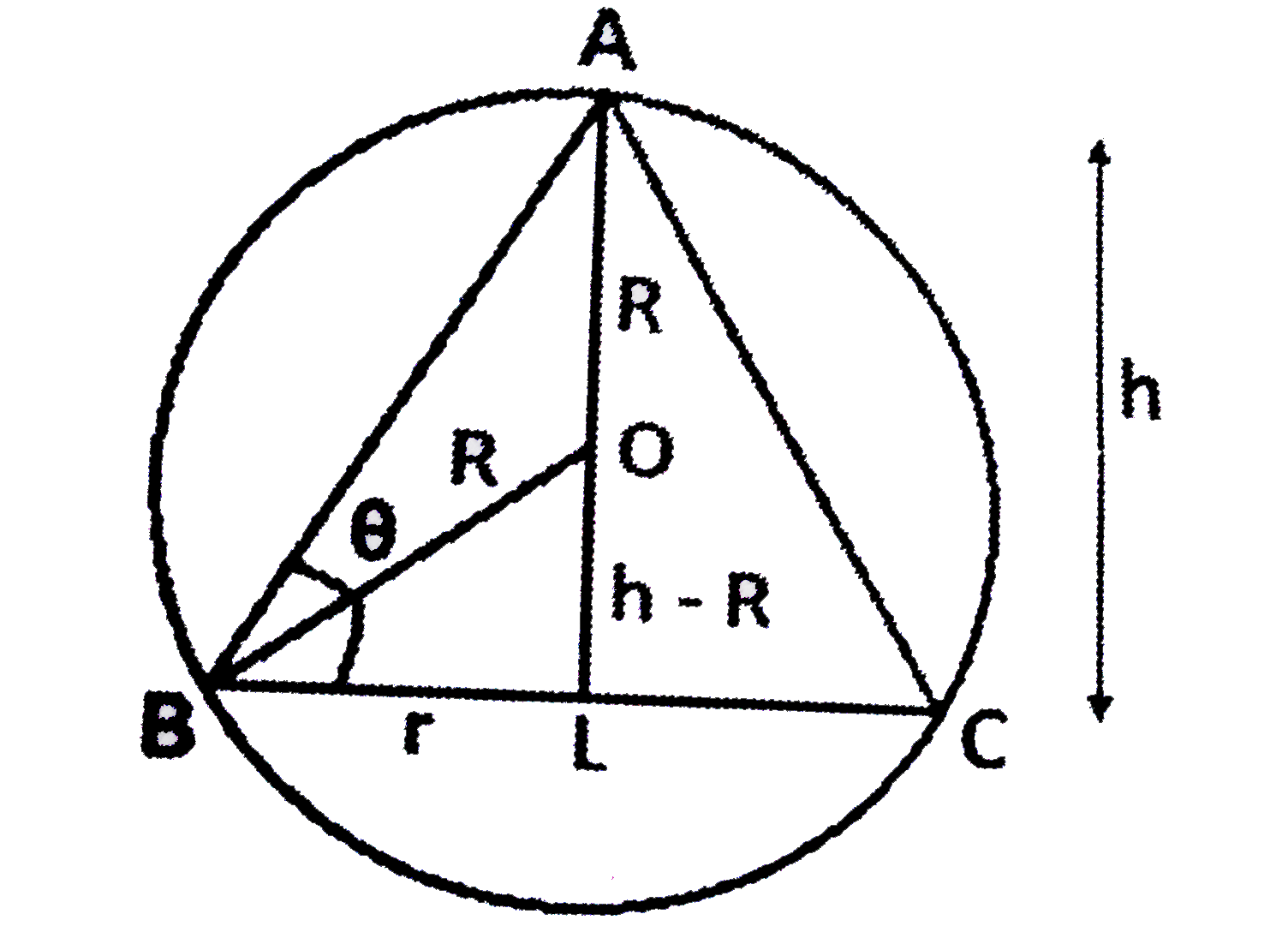Let 2r be the base and h be the heightof triangle, which is inscribed in a circle of radius R
Area of triangle=`1/2`(base)(height)
`A=1/2(2r)(h)=rh…(1)`

Area being positive quantity, A will be maximum or minimum if `A^(2)` is
maximum or minimum.
`Z = A^(2) = r^(2)h^(2) "…………"(2)`
Now In triangle OLB `BL^(2) = OB^(2) - OL^(2)`
In `DeltaOBD`
`Z = A^(2) = r^(2)h^(2) , r^(2) = R^(2) - underset("put in (2)")((h - R)^(2) rArr r^(2) = 2hR - h^(2))`
`Z = h^(2)(2hR - h^(2))`
`rArr Z = (2h^(3)R - h^(4))`
`rArr (dZ)/(dh) = 6h^(2) R - 4h^(3)"......."(3)`
For maxima/minima`(dZ)/(dh) = 0`
`rArr 6h^(2) R - 4h^(3) = 0`
`rArr 4 R = 4h (h ne 0)`
`rArr h = (3R)/(2)`
differentiating (3) w.r.t . h
`rArr (d^(2)Z)/(dh^(2)) = 12 R - 12 h^(2)`
`rArr (d^(2)Z)/(dh^(2))]_(h = (3R)/(2)) = 12((3R)/(2))R - 12 ((3R)/(2))^(2)`
`= 18^(2) - 27R^(2) = - ve`
so, `Z = A^(2)` is maxima when `h = (3R)/(2)`
`rArr A` is maximum when `h = (3R)/(2)`
when `h = (3R)/(2), r^(2) = 2hR - h^(2) = 2R. (3R)/(2) - ((3R)/(2))^(2)`
`r^(2) = (3R^(2))/(4)`
`r = (sqrt(3)R)/(2)`
`tan theta = h/r = ((3R)/(2))/((sqrt(3)R)/(2)) = sqrt(3) theta = (pi)/(3)`
Triangle ABC is equilateral triangle